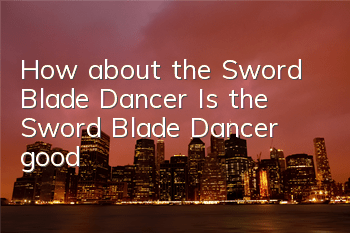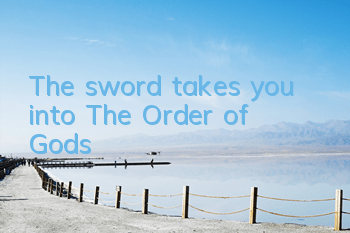[Action elements of "Quick Tornado"]
The Initial is a Japanese-style action game produced by a team of five people in China. It has been logged into steam recently.
As the production team repeatedly claimed, "This is a niche action hardcore game", in order to repay this sincere word, this article will go straight to its action theme and will no longer introduce other features of the game. These features include: Why is a domestic game so Japanese-style? Dinggong and other dubbing are super nice! Why is the plot of the game so simple? Kobayashi Miyu sang the theme song, etc.
There is no doubt that the five-player production team always adheres to economic principles when making this game. The economic principle is not the principle of stinginess, but the principle of "good steel is used on the edge". Therefore, we do not need to be too demanding on the game party's frugality in modeling, plot cutscenes, scene settings, interactive elements, etc., not because they are not capable, but because they are not attentive.
Before officially entering the game discussion, I want to introduce a plate of appetizer meal, but it is definitely complementary to the main meal and has similar colors and tastes.
The above two pictures are from the game "Mighty Final Fight" released on NES by Capcom in 1993. It is translated in a popular way in China, called "Flash Tornado". The reason why this game is mentioned is that there is always a structural experience within the action game, just as there are always more or less ancient Greek genes within European culture, they are the result of generations of action games inherited.
Because most of this structural experience is viewed by game designers as common sense in the industry, these factors will be highlighted intentionally or unintentionally in their works over time. The feeling that "Mighty Final Fight" gives me is that its design in scene combat has a typical feature.
This typical feature is prominently reflected in the design of enemy soldiers. Four enemies appear in these two pictures. I call the four enemies: (1) Police (second from left in the first picture), (2) The little guy with a low sense of presence (ibid., third from left), (3) The big Billy King (first picture), and (4) Assassin Old Egio (ibid., third from left). Let’s analyze what roles these characters play in the game, what characteristics their moves have, and what significance these characters are for the protagonist.
(1) Police: Most of the actions are restrained, and they are good at seizing opportunities to kick the protagonist flat; they observe the protagonist in daily life, and they are good at blocking and grabbing the protagonist in the ground
Attitude to the police: try to get closer, so you have to be proficient in using jumping skills; because the police are good at blocking, the protagonist has to be allowed to grasp the sense of distance and encourage players to use close-up falls.
(2) A guy with a very low presence: a positive appearance, a calm mind, and a gentle attack. He is the ideal object for most girls. In most action games, he is called a slut;
For the young man (2), the player's attitude: face it without pressure from beginning to end. His existence can reduce the player's pressure value and correspondingly reduce the difficulty of the battlefield while increasing the complexity of the battlefield. The complexity of the battlefield refers to the complexity of the mixed arrangement of enemy soldiers. The relative complexity allows players to enjoy a simple sense of blow, and can make the thinking and reaction speed more useful. Therefore, the greatest function of existence is to adjust the rhythm of the game.
(3) Billy King: He is rude in action and is good at using collisions. Before the protagonist can react, the collision will completely interrupt and destroy the player's combo.
For (3) King Billy, the player's attitude: requires the player to observe King Billy's dynamics in melee state. If you use a collision, you will immediately respond: Should you fight or jump? That is, in addition to focusing on coherence in the movements, you should also pay attention to observing the enemy's moves.
(4) Old Assassin Egio: Ranged attacks, flying knives and sliding shovels are all tricks that make players more troublesome, and old Assassin likes to distance themselves from players.
Attitude to (4) old assassin Egio player: priority solution, nothing to say, the existence of such a person is the biggest challenge to disturb the player's sense of continuous action. The player's prediction ability and battlefield processing are required to consider in order, although these requirements are only minor.
In addition, there is also the trap pit in Figure 2. Its existence cuts the blocky battlefield into more subtle shapes, breaking the sense of continuous battlefield, allowing players to look forward and backward when jumping and acting.
The readers may still be wondering why I wanted to write such a large passage of text that has nothing to do with the subject of this article. But it doesn't matter, you'll know right away. Before this, please remember the five friends (1)(2)(3)(4) and traps.
【Action elements of "Elements of the First Physical Plan"]
Unfortunately, due to cost limitations, only from the appearance, there are only five types of minions in the game. What's more serious is that these five types of miscellaneous soldiers will always appear in the scene. You can meet them every time in the middle and late stages. Although their mixing methods may be different, this continuous encounter will definitely make the player feel fatigued, which is not a reason to be tolerated.
However, based on economic principles, these soldiers have quite distinct personalized characteristics and clear division of labor action settings. That is to say, in addition to removing the advantages of soldiers' volume, this game focuses more on creating the quality of soldiers.
"Book of the First Physical Plan" is also a scene-passing action game, which means that comparing these two games is valuable to some extent.
According to the above picture, first of all, our ① shorter girl (because the shortest in the whole venue), for her you can refer to (1) Police, short girl is good atBlocking, grabbing the protagonist to land, stabbing, and falling close together, the best in the game, and always try to get close to the protagonist. Of course, the protagonist is willing to fight with him. This is the object of attracting players to continuously hit, which means that this is the factor that allows the protagonist to enjoy continuity, but her characteristics of being good at sneak attacks and blocking can also be regarded as a factor that interrupts the continuity of players' actions.
②The next one is the silly girl (because she is always beaten stupidly). The silly girl holding a samurai knife is similar to (2) a guy with a very low presence. Unless he is clustered, there will be no threats, the desire to attack is relatively low and the attack speed is slow. This is an excellent object to give players the continuity of their actions.
③ Self-destructing robot, by forcing it to approach the protagonist and explode itself, refer to (3) Billy, is a representative of absolute disruption of player action continuity.
④ Sister Pao and Missile Robot: Sister Pao and Sister Pao holding a sniper rifle is the copyist of the protagonist's best friend. She and the robot are almost long-range roles in the scene, and both try to widen the distance from the protagonist, and the long-range attack collapses the player's sense of continuity. Therefore, the outcome is as miserable as (4) the old assassin. She is obviously the farthest away from the player, but often cannot live the last one.
⑤ Due to the cost, it is estimated that the producer cannot reflect the sense of division on the battlefield. Therefore, by using the persistent laser emitted by laser weapons to force players to jump and avoid it, did you think of the (5) trap?
Whether it is unintentional planting or deliberately cultivating, there are indeed scene elements that action games (at least traditional Japanese action games) should have in the game. If you regard the Ninja Dragon series as a representative of Japanese action games and use a word that everyone recognizes to describe its action design soul, I think the word "continuity" is the best.
【between continuity and discontinuity】
Players enjoy the process of rubbing out a difficult and gorgeous combo, especially in the case of single-on-one situations. The gorgeous combo, the monster's power to fight back, and the monster's blood dent are excellent praises to players who can rub this combo. The gorgeousness and continuity are both reflected in the visual excitement and psychological satisfaction. The game allows players to continue to focus on the game through positive feedback in visual and operation.
And this is exactly what the First Physical Plan is trying to learn. However, does traditional Japanese action games really advocate continuity so much? If the answer is yes, I would recommend you to play the Three Kingdoms Warriors series (excluding the 3rd generation). You will eventually find that the protagonist's continuity is too strong. Even if enemies like Lu Bu are thick and solid, even if the movements and moves are so gorgeous and smooth, it is likely that they will only extend the time of repeated combos.
Therefore, action games need to introduce discontinuity factors on the basis of continuity. Continuity factor is the potential space where players can make moves. The larger the space, the richer the combo. Although the moves in "First Physical Plan" are not complicated, they can still have some combos.There is a lack of connection between the ground and the air combo, and the correlation between moves is not strong.
The non-continuous factor is what I mentioned above. These factors include objects that can make you "swer" and connect very happily, namely the continuity factor, as well as sneak attacks, long-range, pinch attacks, various inexplicably severely damaged enemy moves, as well as lasers that break up space continuity by dividing the scene (although, I really don't like to use lasers to break up space continuity, and this kind of lazyness has reached its limit).
In other words, the discontinuity factor is not in the player, but is distributed among the various elements of the game. The most obvious distribution is the enemy's moves and the elements that cut the space, although they each have their own characteristics. From Super Mario to Legend of Zelda, the action game has undergone a transformation from scene-led to enemy-led.
The above picture is "The Legend of Zelda" from the 1980s. Unlike FC "Super Mario", "The Legend of Zelda" has begun to look down at the camera. Enemies moving under the camera can be forcibly observed by players, which can help players transform the scene center perspective of the original FC game into the enemy's center perspective.
From then on, the scene elements of Japanese action games gradually became auxiliary means, and the responsibility of continuous-discontinuousness in action games was handed over to the enemy's design. This is especially true in the 3D gaming era.
However, it is a bit regrettable that "Book of the First Physical Plan" failed to understand the skills of using discontinuous factors in Japanese 3D action games. When a player plays an action game, it is like going down the swimming pool to swim, the depth of the swimming pool should be just enough for the swimmer to use his hands and feet. The same use of discontinuous factors should be followed by continuous factors, that is, continuous factors > discontinuous factors > continuous factors - discontinuous factors. (Note: This formula is definitely not applicable to works with extremely similar styles in the Soul Series. I will discuss this formula separately at the beginning)
With the highest difficulty of "First Physical Plan" (the game is recommended to play the highest difficulty), all melee units will flow towards you, which will urge the player to keep dodging. After jumping and dodging, it is very likely to hit a ranged muzzle and another melee unit. Because the vision limitation and the enemy will only "reckless" AI will lead to the successful dodging that you think will not be able to achieve the right result, and the unknown attacks you suffer are more like a tragic grievance rather than a skill worse than a person.
In normal difficulty, the enemy's melee AI is designed more reasonably. Melee girls will hold back and lean towards you step by step, and you only need to worry about the few melee girls and long-range surprise attacks around you, although this is just the different size settings of AI attack desire. In this regard, we should refer to "The Angel Hunter" and the Ninja Dragon series. How to ensure a certain degree of discontinuity within the protagonist's field of vision (i.e. within the range of the protagonist's continuity possible) is what the production team needs to think further.
Summary: Although in the current situation where domestic games collectively take the word puzzle solution route, they have taken a bold and sharp step and embraced the ACT game, which is worthy of respect. But I really can't understand that the production team simply calls their games hardcore niche action. A game, especially an action game, is extremely unconfident when it comes to using "niche".
Players' attention will not be weakened as a result. Don't expect to use the word "niche" to avoid criticism risks. Instead, you should embrace this criticism trend, because the more domestic games can adapt to this objective criticism trend, they will get out of the narrow "domestic" label more naturally.
Fortunately, the game maker is constantly correcting the game's bugs based on the player's feedback, I wish you good things.









